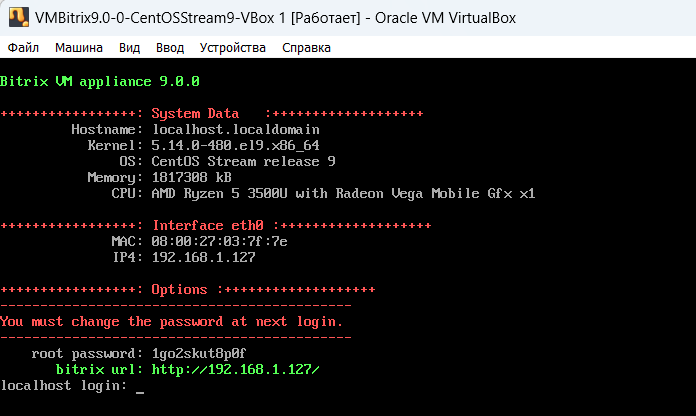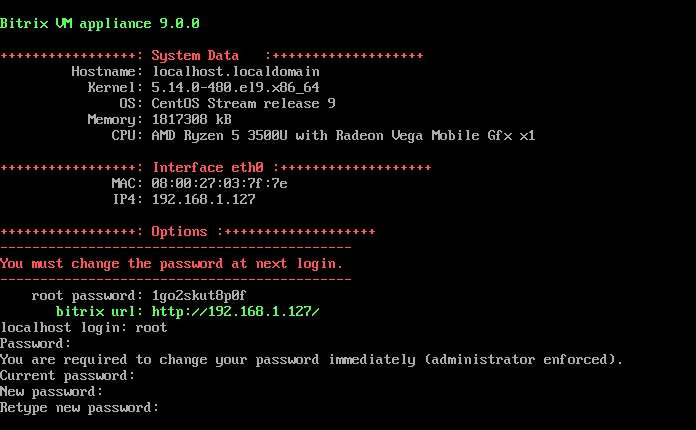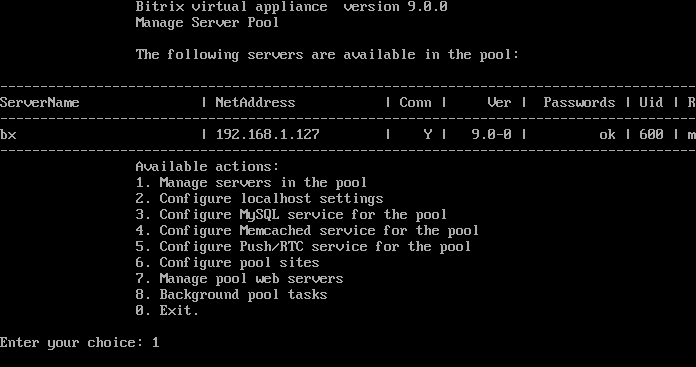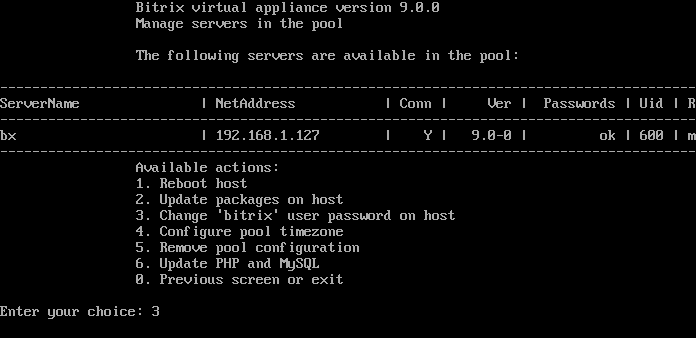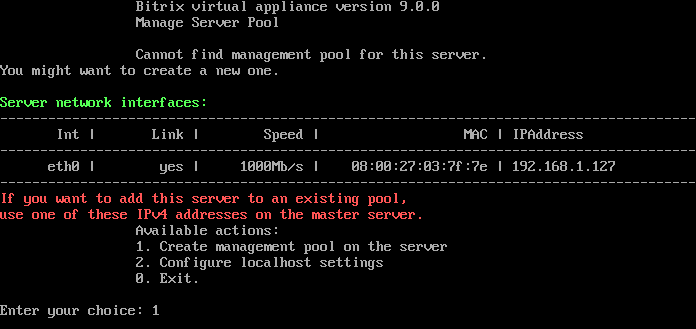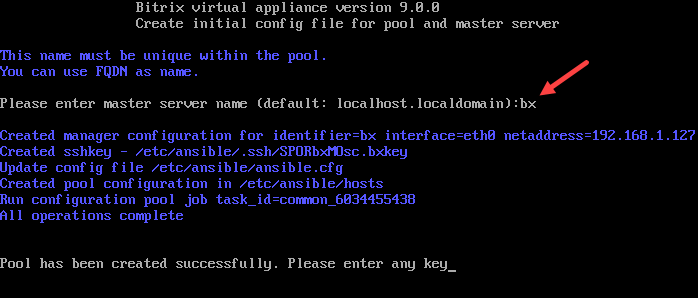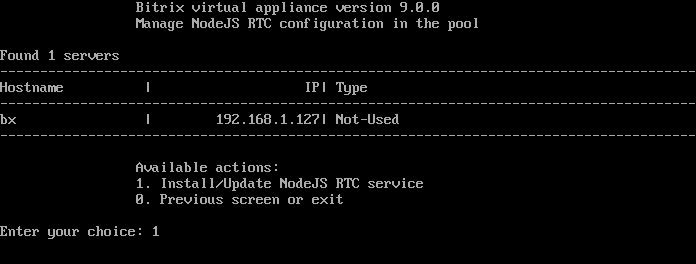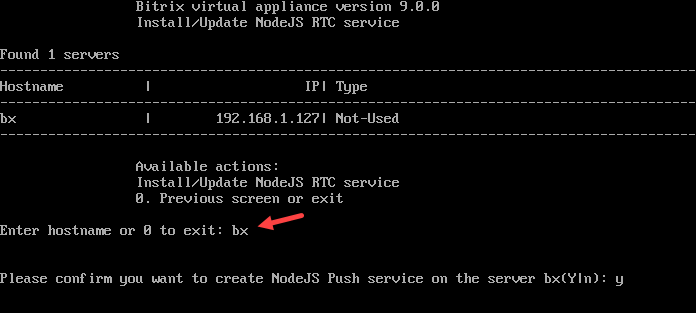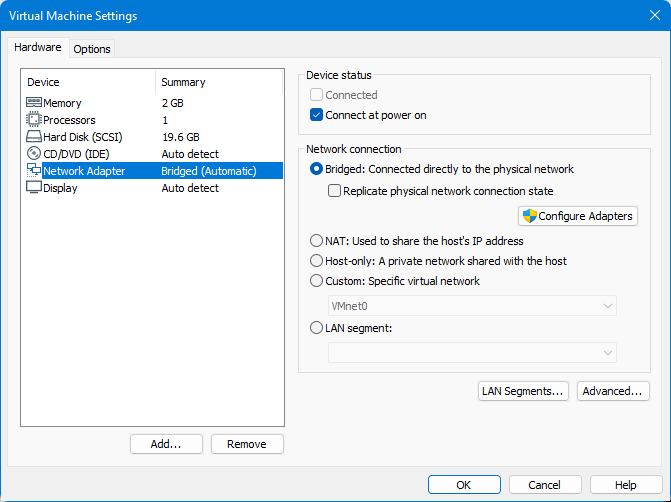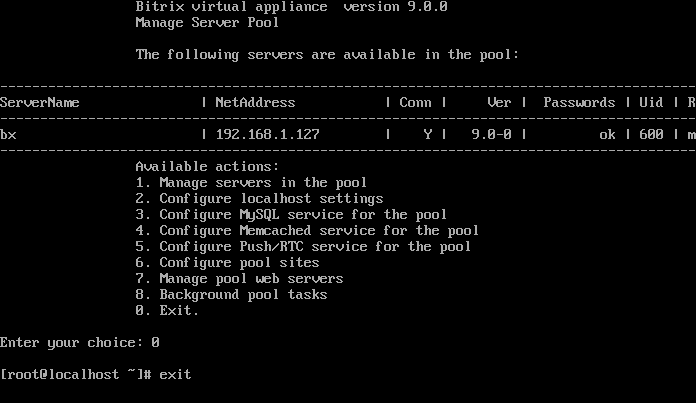Last Modified: 02.09.2024
|
|
|
Views: 3790
Last Modified: 02.09.2024 Launching Bitrix Virtual Appliance
Attention! When Virtual Appliance starts and a black screen appears and disappears right away, but BitrixVA doesn't start, check your processor VT-x/VT-d hardware virtualization. VT-x/VT-d hardware virtualization can be enabled in your PC BIOS. Also, check your bits number for operating system used for launching Bitrix Virtual Appliance – it must be 64-bit system.
Virtual server is ready for further use. To launch Bitrix24 installation wizard or open already installed site, go to the path, specified in the field bitrix url. Note: If problems occur with VMWare Player network adapter or VirtualBox (e. g. when opening site at the virtual appliance URL), you need to go to network adapter settings (Virtual Appliance > Removable Devices > Network Adapter > Settings...), select one of modes (Bridged, NAT, Host-only):
After all server settings are configured, don't forget to exit the root account for security purposes: Note: The root and bitrix user passwords are also used when connecting to site via SFTP.
How to manage BitrixEnvTo proceed to execution of any action in the Virtual Appliance, please input the number and press Enter. For example, to configure virtual server, input 2 in the (Manage localhost) line and press Enter. To return from the command line (when clicking 0. Exit) back to Virtual Appliance menu, enter the following command in the console: /root/menu.sh If wizard errors occurred during BitrixVA operation, wizard logs can be found in the folder When launching several hosts on a single BitrixVA on a local computer or within a local network, indicate arbitrary custom domains instead of IPs for these sites, by writing them beforehand in the operating system's hosts file or the network's DHCP server. Then sites can be accessed using domain names, but within this computer or local network.
Courses developed by Bitrix24
|
